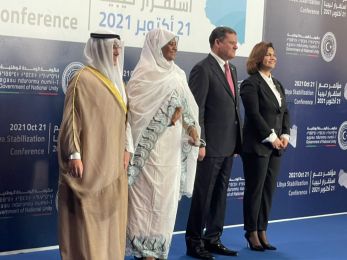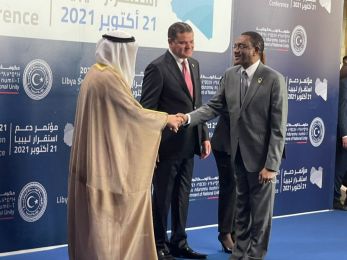Museveni says some education for all than all education for some
Kampala, Uganda (PANA) – Uganda’s President Yoweri Museveni has since January 1986 usually wooed voters, especially in the countryside, using the ‘achievements’ of Universal Primary Education (UPE).
Through UPE, the government takes responsibility for school infrastructure development and maintenance, provision of instruction materials, examination fees, and teachers’ salaries for the seven years of primary education. Parents only buy uniform, scholastic materials and feed their children.
Museveni, then a candidate in the first election he held ten years after capturing power using the gun, announced during a campaign rally in 1996 that he would introduce partially free primary school education amidst pressure from another candidate who had promised universal free primary education.
Museveni’s government followed up with the launching of the programme in January 1997.
Learner enrolment figures surged nearly overnight, more than doubling from 3 million pupils in 1996 to 6.8 million in 2001, according to figures released by the Ministry of Education.
Official figures showed that by the end of 2017, the number of learners enrolled in UPE schools stood at 8.8 million.
UPE serves the poor, with middle class Ugandans enrolling their children in private primary schools (which account for 17 percent of all primary school enrolment), according to a study by the World Bank.
An increasing number of the rich and members of the political class opt for international schools, th study said.
When UPE was launched, the government embarked on massive investment in the primary education sector, committing 27 percent of the national budget for the financial year 1998/99 to the education sector.
Donors came in handy too. As a result, the number of classrooms grew from 69,344 on the eve of introducing UPE in 1996 to 160,341 in 2017, according to the Education Ministry.
The number of teachers in public primary schools almost tripled during the same period, from 73,543 in 1996 to 207,238 in 2017.
With this commanding surge in numbers, it was easy for Museveni and his acolytes to drum up support for themselves, using the programme, although criticism of the same grew over the years, especially regarding the quality of education offered under UPE.
On Feb 4, in Kampala, the World Bank launched a report entitled “Facing Forward: Schooling for Learning in Africa” in which the quality of learning afforded to Ugandan children, especially through the UPE programme, was called into question.
The study, which covered the whole of Africa, noted that increases in learner enrolment in schools were not resulting in creation of essential knowledge capital that the countries needed to transform.
The study ranked Uganda in the same category as its neighbour to the south, Tanzania, but lower than its neighbour to the west, Kenya.
First Lady, Janet Museveni, who is also the Minister of Education, who was the chief guest at the function, made no attempt to wish away the challenges of quality that were earmarked in the report, but invited the stakeholders to look at the glass as half-full rather than half-empty.
Mrs Museveni said: “I need to give a background why Uganda finds itself in the place it appears today. Uganda lost two decades when it was in the time of chaos and the national systems were all in decay, stunted as our population was growing… We only started recently and the going has been tough.”
Her husband, Museveni, also speaks with relative modesty when commenting about the state of UPE.
In a public relations handbook entitled “UPE Transforming Uganda”, printed at the end of last year, Museveni wrote: “From my experience as a battle-tested and battle-hardened fighter, I strongly believe that it is in the best strategic interest of the country to have some education for all than all education for some.”
Thomas Mukasa, 14, sells boiled eggs in Kampala and on a lucky day retires with about $2.
He says he dropped out of school three years ago while in primary six and ran off to the city to find work.
“My mother used to send me to school very early in the morning and I spent most days hungry. I got tired. I gave up,” Mukasa says, as he highlights the key problem of feeding schoolchildren that the authorities are grappling with. Because of this and other problems, many children drop out of school.
In 2012, for instance, 1,877,801 pupils were enrolled in primary one. When that cohort finished primary seven at the end of last year, however, only 671,923 were accounted for. About 1.2 million children had somehow got lost along the way.
-0- PANA ML/RA Feb 202019






